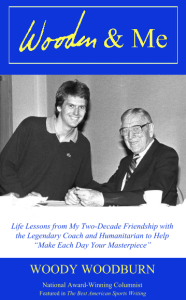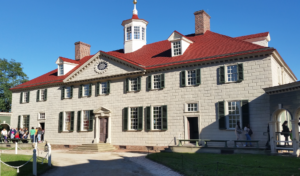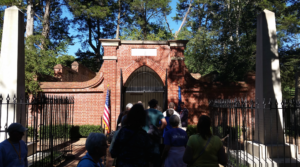 FOLLOW ME ON INSTAGRAM: @woodywoodburn
FOLLOW ME ON INSTAGRAM: @woodywoodburn
*
George Washington
Fills In At My Keyboard
Dear readers and fellow countrymen, I cannot tell a lie, most especially on George Washington’s February 22 birth date: I wanted to take the day off from the keyboard.
Hence, our nation’s first president is ghostwriting my column with his own famous words.
While Washington was no Ben Franklin, or “Poor Richard” for that matter, when it comes to witticisms, “The Father of His Country” was nonetheless the father of countless quotes of wisdom and inspiration. To be sure, his words penned by quill lose no value when retyped on a computer keyboard.
To begin, this maxim comes from the very end of Washington’s “110 Rules of Civility & Decent Behavior in Company and Conversation” which he wrote down at age 16: “Labor to keep alive in your breast that little spark of celestial fire called conscience.”
*
“Leave nothing for tomorrow which can be done today.”
*
“Happiness depends more upon the internal frame of a person’s own mind, than on the externals in the world.”
*
“Worry is the interest paid by those who borrow trouble.”
*
“Associate yourself with men of good quality, if you esteem your own reputation; for ’tis better to be alone than in bad company.”
*
“A sensible woman can never be happy with a fool.”
*
“True friendship is a plant of slow growth, and must undergo and withstand the shocks of adversity before it is entitled to appellation. ”
*
“A slender acquaintance with the world must convince every man that actions, not words, are the true criterion of the attachment of friends.”
*
“Undertake not what you cannot Perform but be Careful to keep your Promise.”
*
“It is better to offer no excuse than a bad one” and, similarly: “99% of failures come from people who make excuses.”
*
“Decision making, like coffee, needs a cooling process.”
*
“We should not look back unless it is to derive useful lessons from past errors, and for the purpose of profiting by dearly bought experience. ”
*
“Put not another bit into your mouth till the former be swallowed. Let not your morsels be too big for the jowls.”
*
“Perseverance and spirit have done wonders in all ages.”
*
“Speak not evil of the absent, for it is unjust.”
*
“Let your heart feel for the afflictions and distress of everyone, and let your hand give in proportion to your purse.”
*
“The turning points of lives are not the great moments. The real crises are often concealed in occurrences so trivial in appearance that they pass unobserved.”
*
“The harder the conflict, the greater the triumph.”
*
“How far you go in life depends on your being tender with the young, compassionate with the aged, sympathetic with the striving, and tolerant of the weak and the strong. Because someday in life you will have been all of these.”
*
“Be courteous to all.”
*
“To encourage literature and the arts is a duty which every good citizen owes to his country.”
*
“I conceive a knowledge of books is the basis upon which other knowledge is to be built.”
*
Finally, let me close with this maxim I found not in a book, but searching online: “ ‘The Internet is full of many false and unverified quotes.’ – George Washington.”
* * *
Woody Woodburn writes a weekly column for The Ventura County Star and can be contacted at WoodyWriter@gmail.com. Follow him on Twitter and Instagram at @woodywoodburn. His books are available at www.WoodyWoodburn.com.
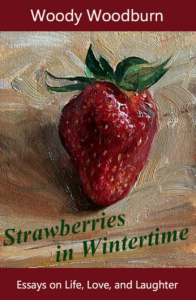
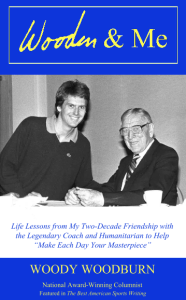 Check out my memoir WOODEN & ME: Life Lessons from My Two-Decade Friendship with the Legendary Coach and Humanitarian to Help “Make Each Day Your Masterpiece” and my essay collection “Strawberries in Wintertime: Essays on Life, Love, and Laughter” …
Check out my memoir WOODEN & ME: Life Lessons from My Two-Decade Friendship with the Legendary Coach and Humanitarian to Help “Make Each Day Your Masterpiece” and my essay collection “Strawberries in Wintertime: Essays on Life, Love, and Laughter” …
- Personalized signed copies are available at WoodyWoodburn.com

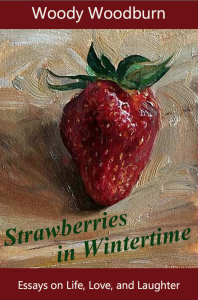 Woody’s highly anticipated new book “STRAWBERRIES IN WINTERTIME: Essays on Life, Love, and Laughter” is NOW available!
Woody’s highly anticipated new book “STRAWBERRIES IN WINTERTIME: Essays on Life, Love, and Laughter” is NOW available! 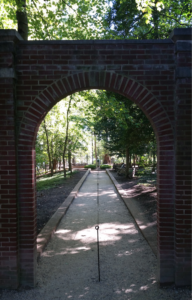
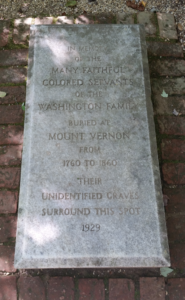 And so it continued for an hour, a history lesson becoming more painfully real because slavery could very possibly be in this beautiful family’s roots. I felt a rising anger and disappointment at Washington.
And so it continued for an hour, a history lesson becoming more painfully real because slavery could very possibly be in this beautiful family’s roots. I felt a rising anger and disappointment at Washington.